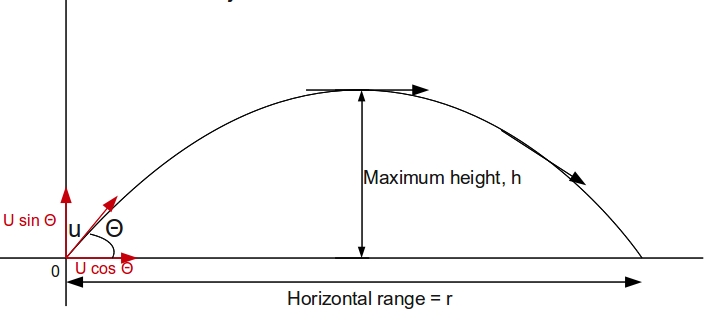A projectile of mass M is projected so that its horizontal range is 4 km. At the highest point, the projectile explodes in two parts of masses M/4 and 3M/4 respectively and the heavier part starts falling down vertically with zero initial speed? [cont.]
The horizontal range of the lighter mass is?
The horizontal range of the lighter mass is?
1 Answer
It is not clearly stated however, assumed that the projectile is fired from the ground as shown in the figure below

Maximum height is reached because of
At this point the un-split projectile has only
As the projectile explodes in two pieces of mass
Considering momenta of both the pieces in the
Let part of mass
In the vertical direction both pieces fall freely under the action of gravity. As such there is no change in the time of flight which is independent of mass.
Considering smaller piece before explosion,
velocity
Let smaller piece travel a further distance
velocity
Distance traveled
Using (1) we get
Horizontal range of lighter part is given as
